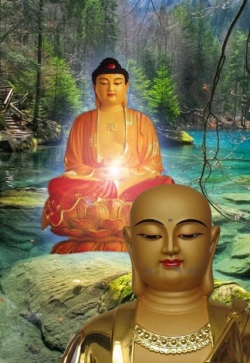Difference between revisions of "Manjushri-mula-kalpa"
Jump to navigation
Jump to search
| Line 2: | Line 2: | ||
The [[Mañjuśrī-mūla-kalpa]] is text of the class designated as [[Kriyā-tantra]]. It is closely aligned and identified with the [[bodhisattva Mañjuśrī]]. | The [[Mañjuśrī-mūla-kalpa]] is text of the class designated as [[Kriyā-tantra]]. It is closely aligned and identified with the [[bodhisattva Mañjuśrī]]. | ||
| − | This [[Mañjuśrī-mūla-kalpa]] is often cited as the earliest example of an extant [[Indian]] [[Buddhist Tantra]]. Some [[scholars]] identify it as a compilation of a core dated circa 6th century with accretions and additions. | + | This [[Mañjuśrī-mūla-kalpa]] is often cited as the earliest example of an extant [[Indian]] [[Buddhist Tantra]]. Some [[scholars]] identify it as a compilation of a core dated circa 6th century with accretions and additions. |
The [[Sanskrit]] version, significantly longer than its corresponding {{Wiki|Chinese}} and [[Tibetan]] renderings, is still extant. | The [[Sanskrit]] version, significantly longer than its corresponding {{Wiki|Chinese}} and [[Tibetan]] renderings, is still extant. | ||
Revision as of 05:24, 23 October 2015
The Mañjuśrī-mūla-kalpa is text of the class designated as Kriyā-tantra. It is closely aligned and identified with the bodhisattva Mañjuśrī.
This Mañjuśrī-mūla-kalpa is often cited as the earliest example of an extant Indian Buddhist Tantra. Some scholars identify it as a compilation of a core dated circa 6th century with accretions and additions.
The Sanskrit version, significantly longer than its corresponding Chinese and Tibetan renderings, is still extant.
